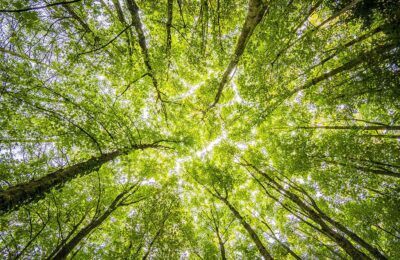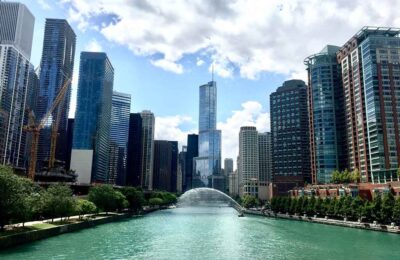
Cheonggyecheon Stream in Seoul, South Korea [Image Courtesy: lifeforstock]
To mitigate traffic, cities build more roads and highways. However, research has shown that building more roads increases more traffic rather than reducing congestion. In several cities, private vehicles often viewed as providing more convenience, comfort during extreme temperatures and act as a sign of wealth, so private vehicles are bound to increase. Alleviating car-dominated spaces and providing places for people to enjoy in cities are important for the quality of life for urban residents.
When the road space is reallocated for sustainable modes of mobility such as walking, cycling and public transit, the city gains more benefits for the people. There is a case example of how removing highways did not generate traffic but provided a recreational and comfortable space in a city for pedestrians and cyclists, while also enhancing the local economy.
Cheonggyecheon stream is a 10.9km modern public recreational space in downtown Seoul, South Korea. It is an urban renewal project by the Seoul Metropolitan Government that transformed a 10-lane roadway and the 4-lane elevated highway into a pedestrian-oriented space with a green-blue infrastructure for the public which was completed in the year 2005. The primary goal of the project was to restore a deteriorated public area and create a waterfront in the downtown area, reinforce the historical views and enhance the environment.
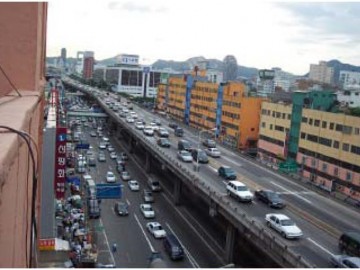
BEFORE
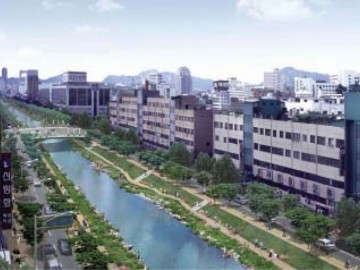
AFTER
The highways and roads transforming into a recreational space for pedestrians [Image Courtesy: Landscape Performance Series]
1) Enhances social inclusion and the city’s economy
The stream reunited two parts of the city that were formerly split into two by road infrastructure.
It attracts about 64,000 daily average visitors. Among those, 1,408 are foreign visitors who provide up to 2.1 billion won (USD 1.9 million) to the city’s economy in tourist spending. The restoration has enhanced both social and economic benefits for the city.
The project has improved the quality of life of people with a nature-filled public space. It acts as a place for culture and recreation with about 259 events hosted for two years after its completion in 2005. According to a survey, about 59% of the people viewed the restoration for its huge benefits of relaxation.
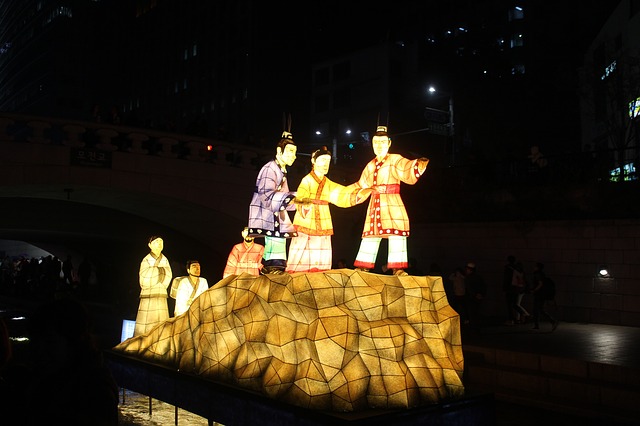
Cultural events in Cheonggyecheon Stream
2) Enhanced green spaces and reduces urban heat island effect
Rivers contribute to the main system for ventilation in cities and satellite imaging of the restoration area demonstrate the heat island effect was mitigated through restoration by bringing back the wind flow through the central city.
The temperatures along the stream are 3.3o to 5.9o cooler compared with the parallel road located 4-7 blocks away while the speed of the wind increased by 2.2-7.8%. This has enhanced the urban area and cooled the environment with cleaner air. Decreased small-particle air pollution from 74 to 48 micrograms per cubic meter.
The removal of the highways and the restoration of the stream also provided better drainage, more wildlife and more green areas.
3) Improved flood resilience
River restoration is closely related to flood prevention. The region of Cheonggyecheon is the lowest-lying area of the old downtown region with a huge basin to gather rainwater and slightly sloped banks making it an extremely flood-prone stream.
Before the restoration, overflow has led to damage in the downtown area for two successive years, provided that torrential rainfall is common in Seoul. The safety issues of flood control became increasingly important in the restoration project. Therefore, the restored stream contained a discharge area design on the recurrence interval of 200-year.
The city of Seoul offers flood protection by placing a target of up to 200-year flood event and can maintain a flow rate of 118mm/hr.
The terraced vertical walls provide people access to changes in water level, induce seasonal interest and acts as a flood defence for the city.

Cheonggyecheon Stream
4) Prioritising pedestrians and transit use
The project built a 6.6-mile continuous green corridor on the east-west for pedestrian, bike riders, and wildlife.
The land-use shift from a car-dominant urban environment to a pedestrian-oriented space has improved the quality of life of its residents, increased economic growth and created both ecological and recreational space for the people in the city.
Natural stones bridge the two banks, devising pathways for people and assisting in controlling water speeds and levels at distinct spots along the stream.

The restoration of Cheonggyecheon Stream prioritised pedestrians and provided recreational space for people. The stones used as a pathway also controls the speed of water [Image Courtesy: Lucasartor]
To enhance north-south connectivity, a total of 22 bridges consisting of 12 pedestrians and 10 automobile and pedestrians were planned to link the two sides of the Cheonggyecheon.
The project also provided increased bus commuter by 15.1% and subway ridership by 3.3% within 2003 and 2008 in the city of Seoul.
The restoration of Cheonggyecheon Stream in Seoul shows the importance of social value in urban areas. The attractive recreation and green space in the middle of the region provides a car-free space for people that improves their quality of life in cities.
The space has also created new cultural and economic opportunities within the region. The project shows the possibility of replacing highways with recreational space without increasing traffic congestion. The restoration further increased public transit riders and added new road connections within the region.
Flood resilience, increasing green spaces, reducing automobiles, and improving air quality in cities are some of the features that are important to tackle the on-going climate change. Making land-use changes can help the city in achieving sustainability in the long-run.
